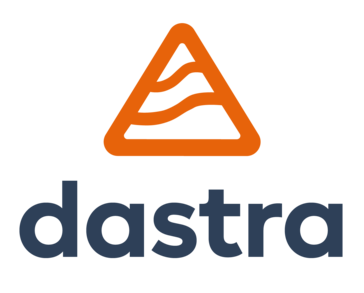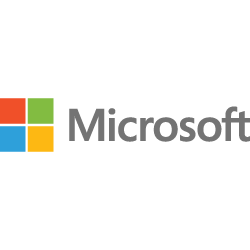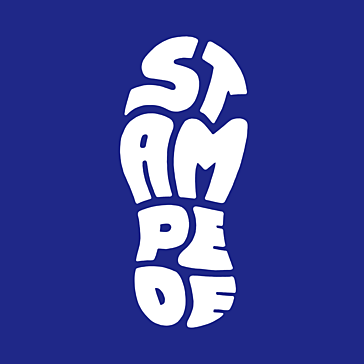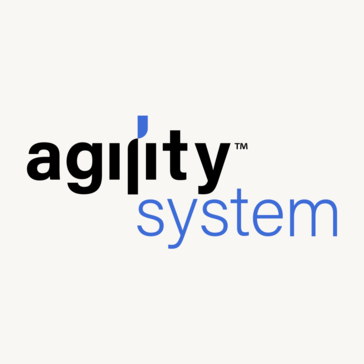4.25
Dastra Review
Explore our Dastra review: deep dive into features, pricing, security, and value for money. Check updates and support info. See if it’s right for you!

Introduction to Dastra
This Dastra review delves into the privacy management software designed to assist organizations in streamlining compliance with regulations like GDPR. Understanding Dastra involves recognizing its role as a centralized platform for managing data processing activities, consent, assessments, and data subject requests. It aims to simplify the complexities of data protection for businesses of all sizes. Getting started with Dastra often involves exploring its core modules, which cover essential Dastra basics for mapping data flows and maintaining compliance records. This overview highlights the primary Benefits of Dastra, focusing on its potential to enhance organizational efficiency and reduce privacy-related risks before we explore its features in more detail.
Comprehensive overview and target audience
Dastra positions itself as a comprehensive privacy management software designed to simplify compliance with regulations like GDPR CCPA and others. It aims to centralize privacy tasks making data protection programs more manageable and efficient. This platform offers a suite of tools covering data mapping processing activities assessment automation and consent management. Essentially Dastra seeks to be the operational hub for Data Protection Officers DPOs legal teams and compliance professionals.
The primary target audience includes small to medium sized enterprises SMEs that need robust privacy tools without the complexity or cost often associated with enterprise level solutions. However its scalability also makes it suitable for larger organizations or specific departments within them managing complex data flows. DPOs particularly value its ability to automate record keeping and report generation saving significant time. Legal and compliance teams benefit from the structured approach to risk assessments and data subject request management ensuring demonstrable accountability.
Key considerations for potential users often involve assessing the platform’s features against their specific needs. Dastra security features are robust employing strong encryption and access controls to protect sensitive compliance data; this is crucial for any organization handling personal information. Furthermore the commitment to regular Dastra updates and new features ensures the platform evolves alongside changing regulations and user requirements providing long term utility. When evaluating Dastra value for money potential customers should look beyond the initial cost. A detailed Dastra pricing comparison reveals different tiers catering to varying organizational sizes and needs making it accessible. The platform aims to deliver significant return on investment through efficiency gains and risk reduction.
- Organizations needing to streamline GDPR or CCPA compliance.
- Data Protection Officers seeking automation for record keeping and reporting.
- Legal teams requiring tools for managing DSARs and risk assessments.
- SMEs looking for an affordable yet comprehensive privacy solution.
- Companies prioritizing strong Dastra security features for their compliance data.
Finally accessibility is enhanced by comprehensive Dastra support and training resources. These include documentation tutorials and customer support helping users regardless of their technical expertise maximize the platform’s benefits. This support structure is vital for successful implementation and ongoing operation making Dastra a viable option even for teams new to dedicated privacy software.
User experience and functional capabilities
Navigating Dastra reveals a generally intuitive interface designed with compliance professionals in mind. The dashboard provides a central overview making it relatively easy to access different modules like data processing inventories assessments or consent management. Dastra user experience insights suggest that while the platform is feature rich most users find the core functions straightforward after an initial orientation period. The layout aims for clarity reducing the typical clutter associated with comprehensive compliance tools. Understanding How to use Dastra effectively often involves familiarizing oneself with its specific workflows particularly for tasks like conducting Data Protection Impact Assessments DPIAs or managing Data Subject Access Requests DSARs.
Functionally Dastra covers the essential bases for privacy management. Its capabilities include:
- Detailed data mapping tools to visualize data flows.
- Registers for processing activities Article 30 GDPR compliance.
- Assessment modules for DPIAs and risk analysis.
- Consent management features for tracking user opt ins and outs.
- DSAR workflow management to handle requests efficiently.
These tools are designed to work together creating a cohesive system for managing privacy obligations. The platform facilitates collaboration allowing multiple users like DPOs legal counsel and IT staff to contribute to the compliance picture. The setup process is aided by resources often detailed in a Dastra implementation guide helping organizations configure the platform according to their specific structure and regulatory needs. This initial setup is crucial for maximizing the software’s benefits.
While many find Dastra user friendly some common problems with Dastra reported by users include an initial learning curve for mastering advanced configurations or specific automation rules. Integrating Dastra with other tools such as HR systems or CRM platforms is possible via APIs though it might require technical expertise depending on the complexity of the integration desired. Seamless integration enhances data accuracy and reduces manual data entry significantly boosting efficiency. Best practices for using Dastra involve regular audits of the data entered maintaining consistent internal processes for updates and leveraging the automation features fully to reduce manual workload. Staying informed about Dastra updates and new features is also vital as the platform continually evolves to address emerging privacy challenges and user feedback enhancing its functional capabilities over time.
Who should be using Dastra
Dastra is designed for a specific range of professionals and organizations grappling with the complexities of data privacy compliance. Primarily Data Protection Officers DPOs will find Dastra invaluable. The platform centralizes critical tasks automates record keeping like Article 30 registers and streamlines the generation of compliance reports saving significant time and effort. Legal and compliance teams also stand to benefit immensely. They can leverage Dastra for managing Data Subject Access Requests DSARs efficiently conducting risk assessments and ensuring demonstrable accountability under regulations like GDPR and CCPA.
Small to medium sized enterprises SMEs often lack dedicated large compliance departments. For them Dastra offers a comprehensive yet accessible solution providing robust privacy management tools without the overwhelming complexity or cost associated with some enterprise level systems. Its scalability however means it is equally suitable for larger organizations or specific departments needing to manage intricate data processing activities effectively. Any organization prioritizing strong security for its compliance data will appreciate Dastra’s focus on encryption and access controls.
Consider a typical Dastra use case scenario: A company receives a surge in DSARs. Using Dastra the compliance team can log track manage and respond to these requests within the mandated deadlines all through a structured workflow reducing manual chaos and potential errors. Another scenario involves preparing for a regulatory audit Dastra provides a centralized verifiable record of processing activities consents and assessments readily available for demonstration.
Ultimately Dastra is for organizations ready to operationalize their privacy programs. This includes those needing to map data flows conduct Data Protection Impact Assessments DPIAs manage vendor risk or maintain an up to date consent repository. To truly harness its power users should adhere to Best practices for Dastra. This involves proper initial configuration consistent data updates leveraging automation features fully and ensuring relevant teams are trained. Following these practices ensures the software becomes an integral part of the compliance framework rather than just another tool.
Unique Features offered by Dastra
Dastra distinguishes itself through significant customization options allowing organizations to tailor the platform precisely to their operational needs and compliance frameworks. Unlike rigid one size fits all solutions Dastra offers flexibility in configuring workflows assessment templates and reporting structures. This adaptability ensures the software aligns with specific industry requirements or internal policies providing a more effective privacy management system. Users can modify data fields create custom assessment questionnaires and define user roles with granular permissions ensuring the platform mirrors the organization’s structure and processes accurately.
Several unique features enhance Dastra’s value proposition. The platform often includes advanced modules for vendor risk management or specific compliance frameworks beyond standard GDPR CCPA requirements. Its automation capabilities extend to generating custom compliance documentation and automating reminders for tasks like assessment reviews. This level of detail and automation supports “Customizing Dastra for business growth” by freeing up resources previously bogged down in manual compliance tasks allowing teams to focus on strategic initiatives. Accurate streamlined compliance builds trust which is essential for expansion and customer retention.
The platform’s scalability and tiered pricing make it particularly suitable as “Dastra for small businesses” providing access to enterprise grade features without the associated overhead. Smaller organizations benefit greatly from customizable templates and guided workflows simplifying complex processes like DPIAs. Furthermore “Integrating Dastra with other tools” is a key advantage. While some technical know how might be needed for complex integrations Dastra offers API access facilitating connections with existing CRM HR or IT service management systems. This integration streamlines data flows reduces manual entry errors and creates a unified view of privacy related data across the organization enhancing overall efficiency and accuracy. This connectivity is vital for ensuring compliance data is consistent and readily accessible when needed.
Pain points that Dastra will help you solve
Many organizations find navigating the complex landscape of data privacy regulations like GDPR and CCPA incredibly challenging. Maintaining compliance often involves manual processes that are time consuming error prone and difficult to scale. Keeping track of data processing activities managing consents handling data subject requests and conducting necessary assessments can quickly overwhelm internal teams diverting valuable resources from core business objectives. This operational friction not only increases compliance risks but also hinders efficiency.
Dastra is specifically designed to alleviate these common struggles. Here are some key pain points the platform helps you solve:
- Overwhelming Compliance Requirements: Feeling buried under GDPR CCPA or other regulatory demands. Dastra provides structured workflows and templates to simplify compliance documentation and processes.
- Inefficient DSAR Management: Struggling to track respond to and document Data Subject Access Requests within strict deadlines. Dastra offers a dedicated module to streamline the entire DSAR lifecycle.
- Manual Record Keeping Burden: Spending excessive time manually updating Article 30 registers or data inventories. Dastra automates record keeping ensuring accuracy and easy access for audits.
- Complex Risk Assessments: Finding Data Protection Impact Assessments DPIAs or other risk analyses complicated and difficult to manage consistently. Dastra provides tools and templates to conduct and document these assessments systematically.
- Lack of Centralized Visibility: Operating with fragmented information across different departments leading to an incomplete view of privacy posture. Dastra centralizes all privacy management activities providing a single source of truth.
- Demonstrating Accountability: Facing difficulties proving compliance efforts to regulators or auditors. Dastra maintains comprehensive auditable records facilitating accountability.
- Consent Management Chaos: Lacking a clear system for tracking user consent and preferences reliably. Dastra offers tools for managing consent lifecycles effectively.
- Scaling Privacy Programs: Finding it hard to adapt privacy processes as the business grows or regulations change. The platform’s flexibility supports various needs making Dastra for different businesses sizes a viable solution.
By addressing these fundamental operational challenges Dastra transforms privacy compliance from a burdensome obligation into a manageable strategic function. Reducing manual effort through automation and achieving a clear overview allows teams to focus on higher value activities. This efficiency boost is crucial when considering “Customizing Dastra for business growth”; streamlined compliance builds trust and frees up resources. Furthermore the ability in “Integrating Dastra with other tools” like your CRM or HR systems eliminates data silos creating a more cohesive and accurate data environment. This holistic approach ensures that regardless of your organization’s scale the path to robust data protection becomes significantly smoother reducing risk and enhancing operational effectiveness.
Scalability for business growth
As businesses expand their operations customer base and data footprint the complexity of managing data privacy grows exponentially. A privacy management solution must not only meet current needs but also scale effectively alongside the organization. Dastra is built with this trajectory in mind offering robust scalability to support companies through various stages of growth. Its architecture is designed to handle increasing volumes of data processing activities assessments and data subject requests without compromising performance. This inherent flexibility ensures that as your compliance requirements become more intricate Dastra can adapt.
The platform’s tiered structure allows organizations to start with a package suited to their current size and complexity then seamlessly upgrade as needs evolve. This avoids overinvestment initially while guaranteeing access to more advanced features when required. Furthermore the ability to add users manage multiple entities or departments and integrate with a growing ecosystem of business tools contributes significantly to its scalability. Efficiently handling a larger workload means compliance processes do not become a bottleneck during expansion. This proactive approach is crucial; successfully “Customizing Dastra for business growth” involves leveraging its flexible framework to align precisely with your evolving operational structure and compliance strategy ensuring the platform grows with you not against you.
Effective scalability also involves adapting to new regulations or expanding into new markets with different legal requirements. Dastra’s design facilitates the management of multiple compliance frameworks simultaneously. Properly “Customizing Dastra for business scalability” means configuring the platform to manage these diverse obligations centrally streamlining cross jurisdictional compliance efforts. This capability reduces friction and ensures that data protection remains robust and manageable even amidst rapid growth or strategic shifts. Dastra provides the foundation for a sustainable privacy program that supports rather than hinders long term business objectives ensuring compliance remains an asset not a liability as your organization thrives.
Final Verdict about Dastra
Dastra presents itself as a robust and comprehensive privacy management platform. It successfully centralizes essential compliance tasks, making the complex world of regulations like GDPR and CCPA more manageable. Its focus on streamlining data mapping, processing activity registers, risk assessments, and data subject request handling provides tangible benefits. The software clearly aims to be an operational hub for Data Protection Officers and compliance teams, particularly within small to medium sized enterprises, although its capabilities certainly scale for larger organizations too.
While the user experience is generally positive, featuring an intuitive interface for core functions, new users should anticipate an initial learning period to master its full capabilities. This investment is worthwhile however. Dastra effectively tackles significant pain points common in privacy management: it replaces cumbersome manual record keeping with automation, simplifies the often chaotic process of managing DSARs, and provides structured frameworks for conducting necessary assessments like DPIAs. This centralization and automation are key strengths, demonstrably reducing administrative burden and compliance risk.
The platform’s customization options and scalability are noteworthy advantages. Businesses can tailor workflows and reports, ensuring the software aligns with specific operational needs. Its ability to grow alongside an organization, handling increased data volumes and user demands, makes it a viable long term investment. Integration capabilities via API further enhance its value, connecting privacy management with other essential business systems, though this may require technical resources depending on the integration’s complexity.
So, the Final verdict on Dastra is largely positive. It stands out as a highly capable, focused, and scalable solution for operationalizing data privacy compliance. It effectively addresses the core challenges faced by DPOs and legal teams, offering significant efficiency gains and risk mitigation features. While the initial setup and mastering advanced features might require some effort, the benefits of a centralized, automated, and adaptable privacy management system make Dastra a strong contender for organizations serious about streamlining their compliance programs and building a sustainable culture of data protection. It offers good value, particularly for SMEs needing comprehensive tools without excessive complexity or cost.
Advantage
Disadvantage
Streamlines complex data privacy compliance processes
Automates data mapping and record-keeping tasks
Efficiently manages data subject access requests (DSARs)
Centralizes all crucial privacy documentation
Helps reduce risks of costly non-compliance fines
Disadvantage
Steep learning curve for beginners
Can be expensive for small businesses
Some features might feel overwhelming initially
Limited integrations with specific niche tools
User interface requires some familiarization
Rating
Standard
€149 per Month Paid Monthly
- 1 user
- Processing record
- Data subject rights
- Cookie consent
- Audits module
- Risks module
- Documents module
- Data processing agreement
- Data breach module
- Training module
- Indicators module
- API Access
- Email chat support
- 1 hour training
Business
€599 per Month Paid Monthly
- All features in Standard+
- 5 users
- Multi-entity module
- Advanced rights management
- Advanced customization
- Dedicated account manager
- 2 hours training
Standard
€1428 per Year Paid Yearly
- 1 user
- Processing record
- Data subject rights
- Cookie consent
- Audits module
- Risks module
- Documents module
- Data processing agreement
- Data breach module
- Training module
- Indicators module
- API Access
- Email chat support
- 1 hour training
Business
€5988 per Year Paid Yearly
- All features in Standard+
- 5 users
- Multi-entity module
- Advanced rights management
- Advanced customization
- Dedicated account manager
- 2 hours training
Product Support
Web Based
Windows
Mac OS
Linux
Android
iOS
Phone Support
Email/Help Desk
AI Chat Bot
Live Support
24/7 Support
Forum & Community
Knowledge Base
Live Online
Documentation
Videos
In Person
Webinars
Company: Dastra SAS
Email: contact@dastra.eu
Address:
110 Esplanade du Général de Gaulle, 92400 Courbevoie, FrancePhone: #ERROR!
Implementation
Web Based
Windows
Mac OS
Linux
Android
iOS
Support
Phone Support
Email/Help Desk
AI Chat Bot
Live Support
24/7 Support
Forum & Community
Knowledge Base
Training
Live Online
Documentation
Videos
In Person
Webinars
Group text
Company: Dastra SAS
Email: contact@dastra.eu
Address:
110 Esplanade du Général de Gaulle, 92400 Courbevoie, France
Phone: #ERROR!
Alternative Products
Web Based
Documentation, Videos, Webinars
Phone Support, Email/Help Desk, AI Chat Bot, Live Support, Knowledge Base
Frequently Asked Questions
What is Dastra exactly?
Dastra is a comprehensive data privacy management platform designed to help organizations automate and streamline their compliance efforts with regulations like GDPR, CCPA, and others.
Who is Dastra best suited for?
It’s best suited for Data Protection Officers (DPOs), legal and compliance teams, IT security professionals, and businesses of all sizes (from SMBs to large enterprises) that handle personal data and need to ensure regulatory compliance.
How can Dastra help me?
Dastra can help you by centralizing your privacy program, automating tasks like data mapping and Records of Processing Activities (RoPA), managing Data Subject Access Requests (DSARs) efficiently, conducting Data Protection Impact Assessments (DPIAs), tracking consent, managing cookies, assessing vendor risks, and ultimately reducing the risk of fines and building customer trust.
What are Dastra's key features?
Key features include automated data discovery and mapping, a centralized RoPA register, DSAR management workflows, consent and preference management tools, customizable DPIA/PIA templates, vendor risk management modules, audit logs, and comprehensive compliance reporting dashboards.
Is Dastra easy to set up and use?
Dastra is designed with user-friendliness in mind, featuring an intuitive interface and guided workflows; while basic setup is straightforward, mastering advanced configurations and integrations may require some familiarization or support, but onboarding resources are typically provided.
How does Dastra's pricing work?
Dastra typically operates on a Software-as-a-Service (SaaS) subscription model, with pricing tiers based on factors like the number of users, data records managed, specific modules required, and company size; often, a free trial or personalized demo is available to evaluate the platform.
What kind of customer support does Dastra offer?
Customer support generally includes access to an online knowledge base, documentation, email support, and in-app chat support, with higher-tier plans often offering dedicated account managers and priority assistance.
Is Dastra worth it?
For organizations serious about data privacy compliance and looking to move beyond manual processes, Dastra represents a valuable investment by significantly improving efficiency, reducing compliance risks, and demonstrating accountability to regulators and customers, making it worth considering if its features align with your specific needs and budget.






